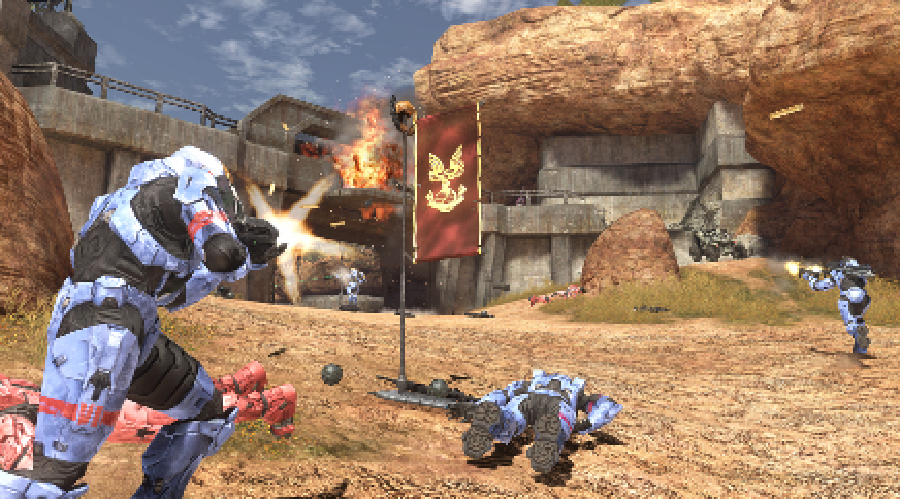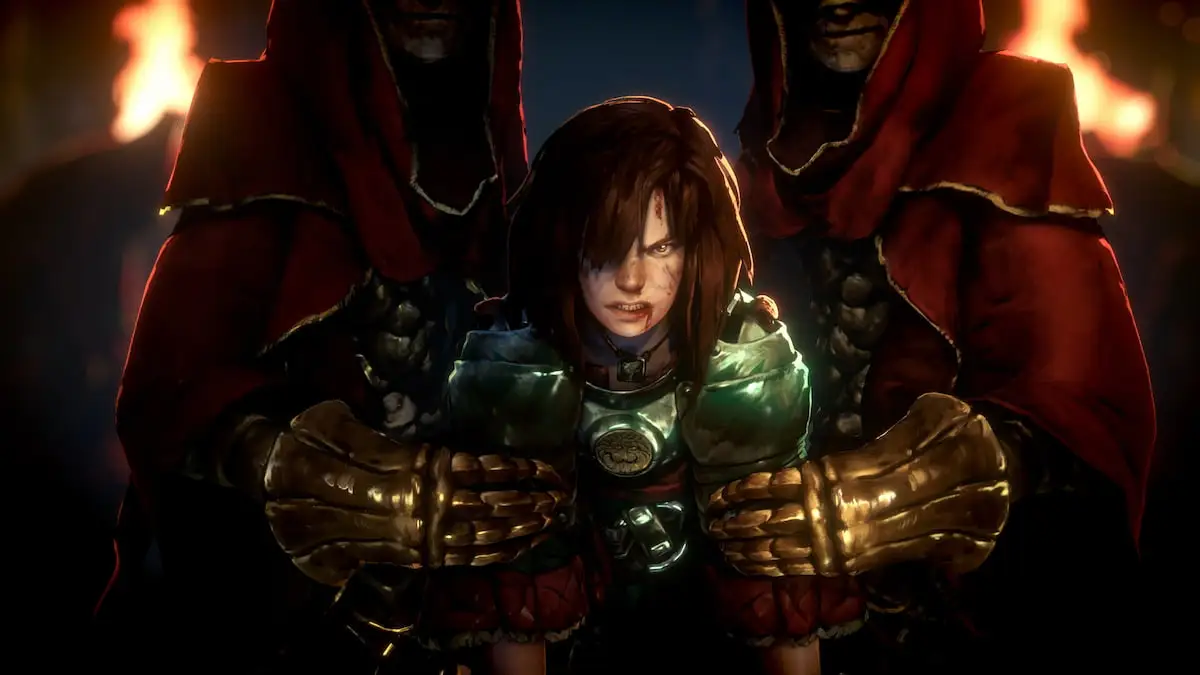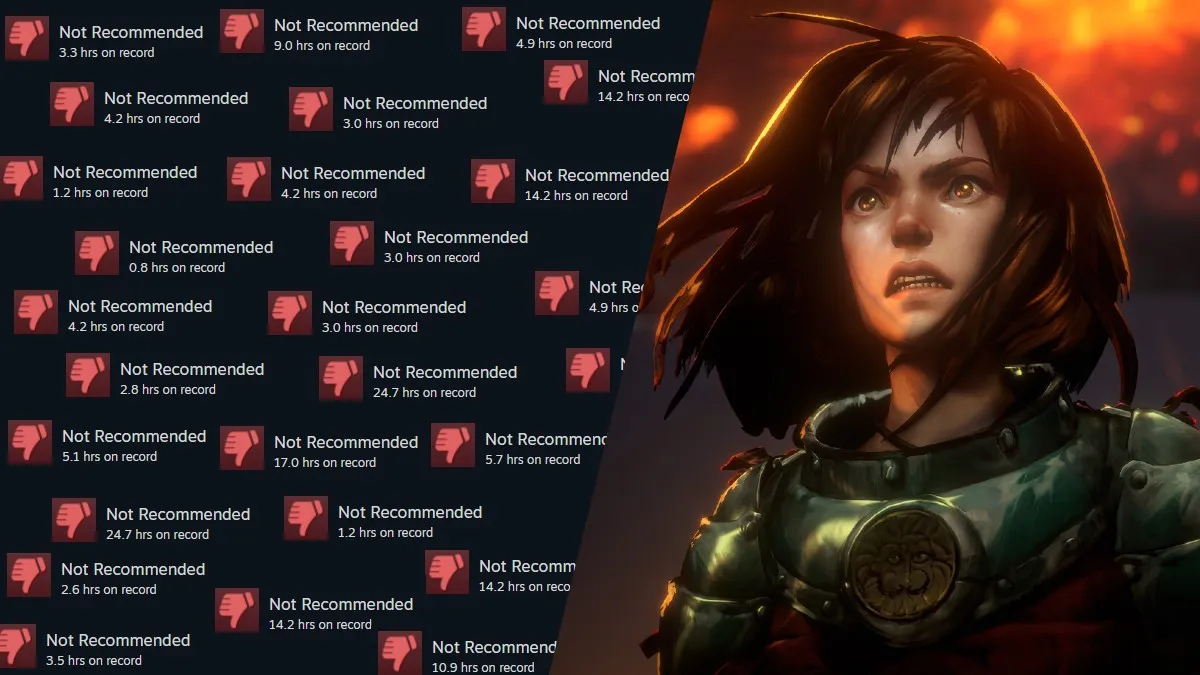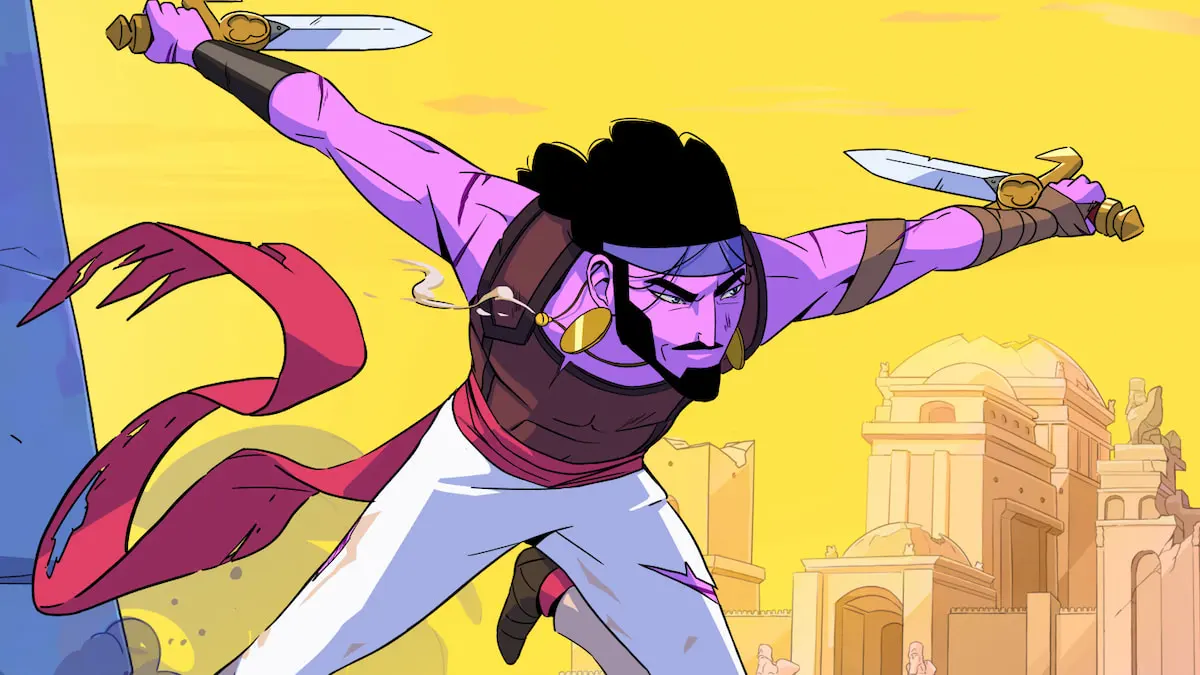Prima: You mentioned just now before I’d turned the tape on that it was based on the North Africa parts of Halo 3. Can you talk a bit about its background?
Mike Zak: It’s sort of in the same environment as the jungle parts of the African/Kenyan kind of landscape. It’s lusher like the jungle in terms of using a lot of the same foliage and canopy. It’s more like the dam at the end of the jungle – the backside of the dam.
Prima: What’s the layout?
Mike Zak: In a way it’s probably a bit of a successor to Turf from Halo 2 in that it’s basically a kind of a square, with major alleys on all four sides and then it’s got an internal building that has routes through it at different levels, and then there’s also loops around the backside of the major alleys. It’s asymmetrical, but it plays pretty well as far as a Flag game, it plays pretty well for Assault games, Slayer games. It’s really popular. We played it at our Bungie pentathlon, so it’s been really solid gameplay-wise for a couple of months now.
Prima: So it’s a good all-rounder, really.
Mike Zak: Yeah. It’s not super-small, but it’s not a big map – it’s a really good four-on-four map. It really hits that sweet spot, I think.
Prima: How does the process of making a new map actually work?
Mike Zak: In multiplayer, essentially we start off with a basic idea of – I boil it down to what we call a napkin sketch, which isn’t necessarily common terminology but refers to the gist of an idea that I could scrawl down on a piece of paper and communicate to other artists and say “this is the core idea of the map, it’s the essential layout hook or premise”. And then we very quickly go from that stage to getting into 3D and modelling it in grey model, or box model, or very coarse geometric form, so we can start feeling the volume, distances and ranges and get a sense for the scale really quickly. You can noodle forever in 2D and do diagrams with pen and paper, but ultimately the proof of that napkin comes in 3D, so you get it to 3D right away. Immediately you get a sense for whether there’s a kernel of fun emerging or not.
Prima: Do you find yourself thinking more in 2D than 3D about how maps are laid out?
Mike Zak: We do have certain maps that are very vertical in nature, like Construct in Halo 3, and that is a good reason to get out of 2D drawings quickly. I think that you can extrapolate a fair amount of 3D interest, because a lot of the range of 3D ceases to be interesting beyond a certain point. As far as engagement with the player, if I’m on a ground plane and someone’s on a balcony, that can be an interesting exchange, but if he’s three storeys up, I don’t even see him and even though we’ve got lots of vertical gameplay there it’s actually annoying.
So you can actually get a sense of that – I can draw three levels of height variation in a 2D drawing just with shading or something simple, and on a one-on-one encounter level you don’t want much more than that, otherwise you need to start introducing very gimmicky elements like in Construct with air jets that take you way up. That’s like the whole point of the map, that you ascend ten storeys in a rapid amount of time, so we think of height variation in layers of one to two to three storeys and separate those by more significant gaps.
Prima: What do you guys do in terms of research to make sure those first steps are valuable and not just random guesswork?
Mike Zak: There’s happy accidents, but the vast majority of it comes…This is also our third iteration, so you’ve got to understand that we’ve been doing this for a long time and we’ve got a pretty good sense of what worked, what we haven’t tried and we want to try, or what we want to refine and maybe improve upon.
So there are cases where someone just has a crazy idea and he’s like, “I want a hollowed out volcano that’s like Swiss cheese and you fly the Banshee through it,” and sometimes we try those things, but those crazy, crazy ideas – those work with far less frequency. So that model does exist, but it’s certainly not the modus operandi.
Brian Jarrard: I would add to that that we iterate progressively. We’re talking about a studio full of super-critical, opinionated people who don’t hold back on sharing their thoughts, so I mean if something’s not fun then you’re going to hear about it immediately. The guys just aren’t going to let something that’s mediocre go out the door.
That, and then like Mike said, we can look back. We monitor the community, we interact with fans, we can look at what people are playing online the most, so we have some data to go by as well. We can see that people like to play Team Slayer more than anything else and then followed by Capture The Flag, and those [facts] can help mould decisions as well.





